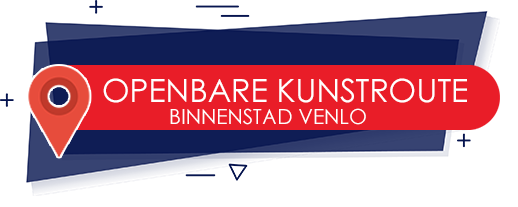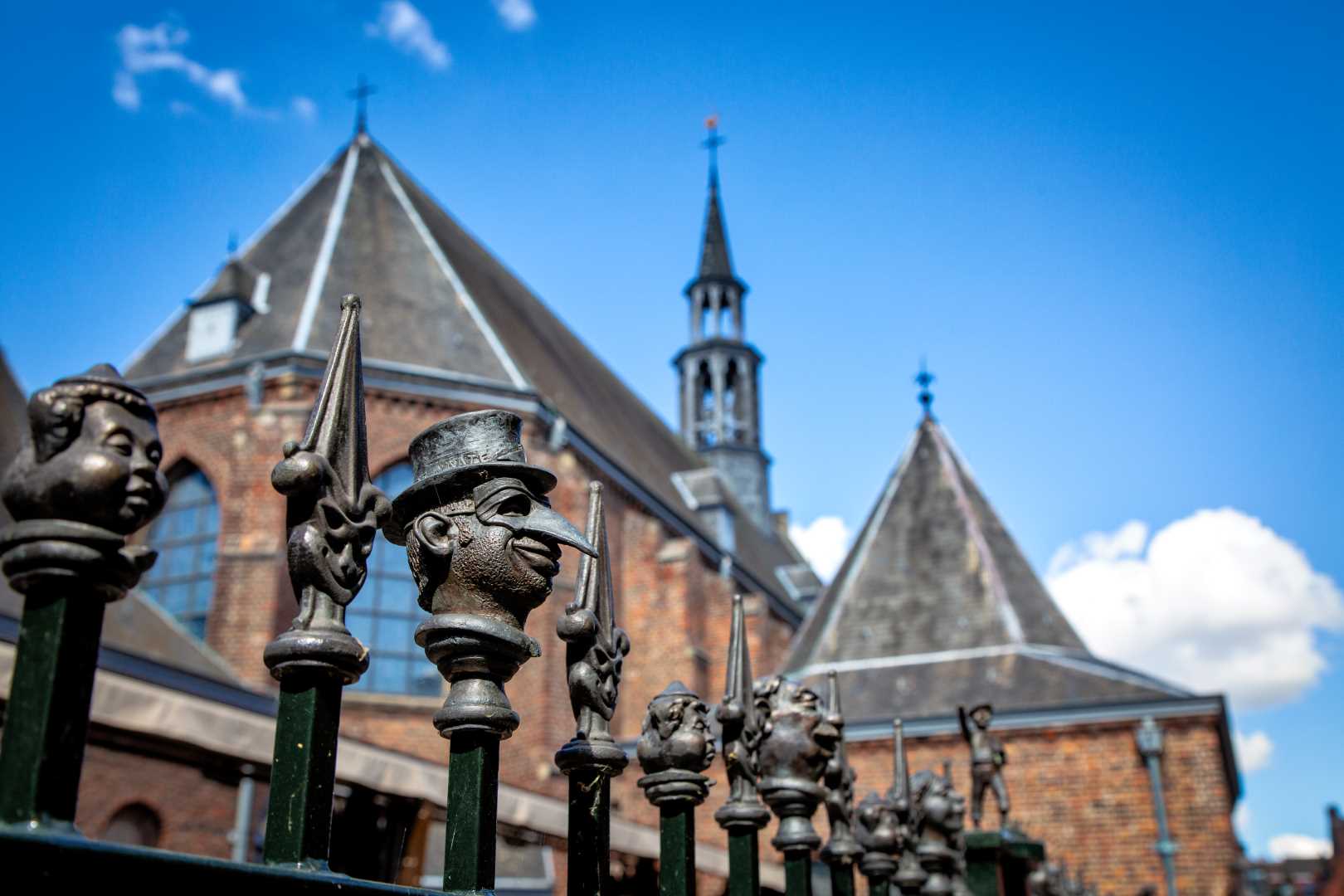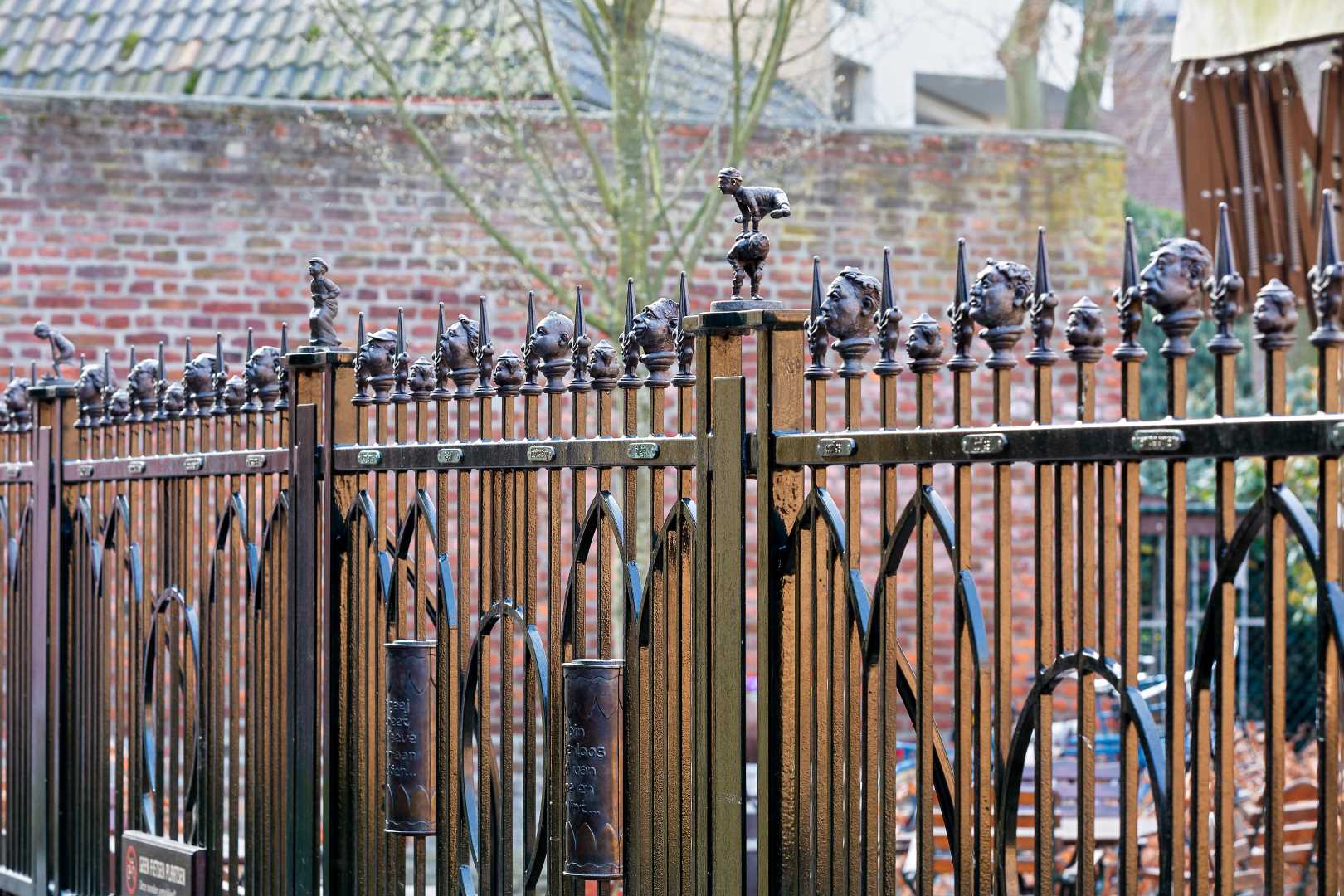Fencing with the heads
Keizerstraat
Fencing with the heads (köpkes) – Ger Janssen
Due to the hinder and deterioration of the Keizerstraat, the Dominican Fathers decided to place a fence next to the Dominican Church in the late 20th century. The creator of the fence, artist Ger Janssen,together with the workgroup ‘Floddergats’ which was set up to complete the fence, looked for a way to give the fence even more allure. Janssen decided to humorously incorporate the Dialect of Venlo into the fence by means of Venlo personifications, by using bronze heads (köpkes), and human and animal figures.
There are also reliefs depicting old sayings from Venlo and rotating ornaments on which typical Venlo texts can be read. Children’s games are depicted on the piers.
Janssen worked on the project for some 20 years; his probably last work for the fence was placed in 2020 and is a relief showing a jester kicking the coronavirus in the butt. The title of the relief is ‘De klets e weg’, which is the Venlo word for having a cold and thus symbolic for corona. The köpkes have real Venlo names like Bäökmoel, Potflaaj, Slaajlip, Kieskedie, Strónsmadam, Toegeneide, Greek, Waerheks and Gladjanus. Generally not flattering nicknames for a person. Between the köpkes are Janus heads, images with two faces. They represent the good and the bad.
The artist: Ger Janssen
The work of Venlo artist Ger Janssen is characterised by diversity. After completing his training at the StadsAcademie voor Toegepaste Kunsten in Maastricht, and a brief career in the advertising world, he chose to work for himself and let his imagination run wild.
After working as an illustrator for a long time, Janssen was offered the opportunity to design a bronze statue for the Dominican Church (now Domani) in Venlo. From then on, the creation of bronze sculptures became his main focus.
The sculptures speak for themselves; it is mankind in general that inspires Janssen in its movement and mimicry. Feelings become tangible in a pose, emotions are captured in a simple gesture.
Keizerstraat
The Keizerstraat is also called ‘Floddergats’ by the people of Venlo. That was back in the days when the part of the street between Ursulastraat and Nieuwstraat was still a narrow, muddy corridor. The street was constructed in 1652 and served from the Keulsepoort as access to the cloister quarter and the cloisters Mariaweide and Trans-Cedron located there. Originally, the street was called Kloosterstraat, although in the 17th century it was also called Enge Begijnengang. This changed after Emperor Napoleon and his retinue allegedly rode through the street in 1804. His horse supposedly lost a horseshoe there, and that horseshoe has always been preserved.
In the last decades of the 20th century, Keizerstraat was quite rundown and there was a lot of drug abuse and violence. The Dominican Fathers decided to limit this nuisance by placing a fence along the side of the Dominican chapel. Partially due to the efforts of housing corporation Woonwenz and a few entrepreneurs, the Keizerstraat has now changed into a pleasant and lively street where people like to walk around and stroll.







